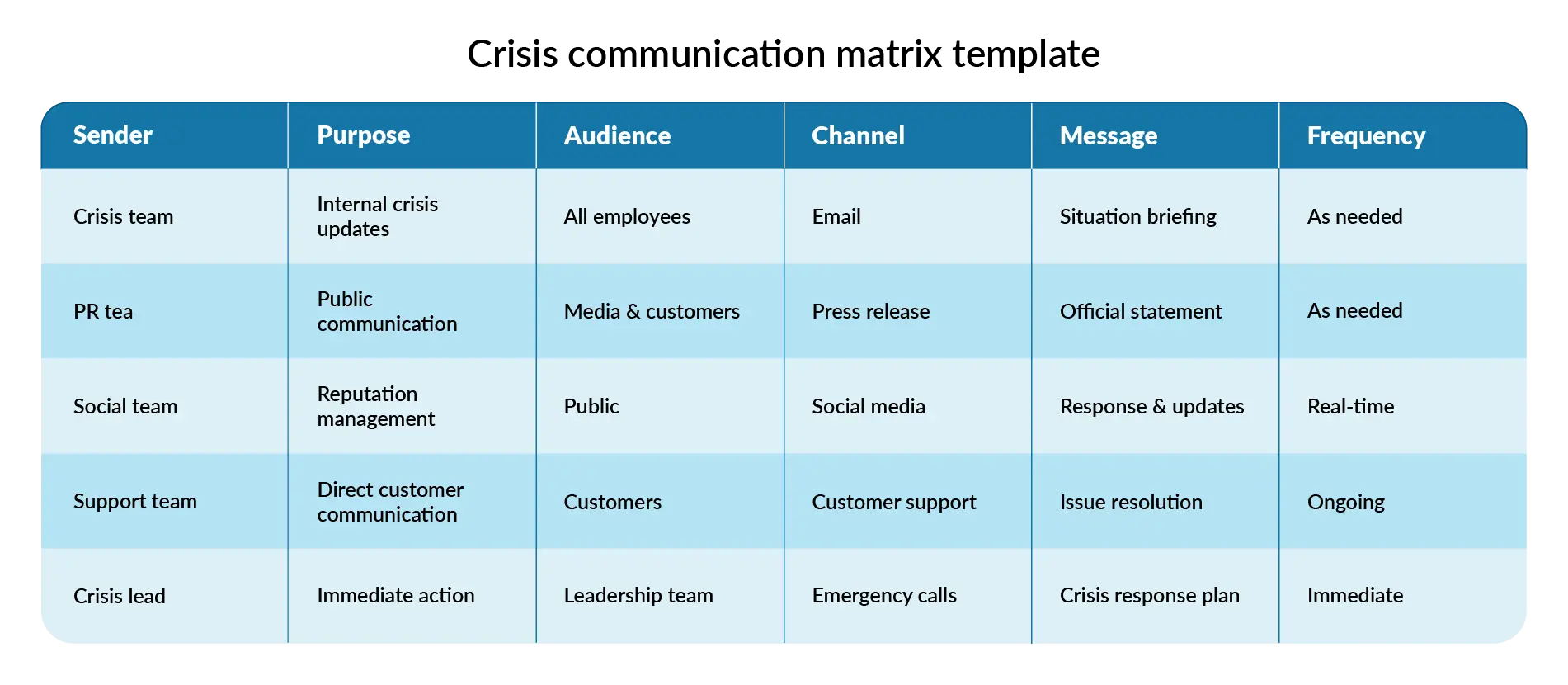What is the communication matrix, and why does every company need it?
Explore the communication matrix, its templates, and styles in project management. Learn how to manage stakeholders, tasks, and deadlines effectively.
Explore the communication matrix, its templates, and styles in project management. Learn how to manage stakeholders, tasks, and deadlines effectively.

Clear and effective communication is what keeps a business running smoothly. But let’s be real—many teams deal with mixed messages, misalignment, and unnecessary slowdowns just because communication isn’t crystal clear. That’s where a communication matrix comes in. It helps cut through the chaos, making sure the right people get the right information at the right time. Think of it as a roadmap for communication. It defines who needs to know what, when they need to know it, and how the information should be delivered. Without it, teams risk working in silos, missing critical updates, or wasting time on endless back-and-forths. A well-structured matrix brings clarity, accountability, and efficiency to every conversation. Whether it’s keeping projects on track, aligning leadership, or making presentations hit harder, a solid communication structure changes the game. In this article, we’ll break down what a communication matrix is, why it matters, and how it can level up the way your business communicates.
The communication matrix is a cheat sheet for how information flows within an organization. A communication matrix keeps workflows clear and organized for remote teams or fast-moving projects. Small businesses benefit from its structure, helping them make efficient use of limited resources as it maps out:
This removes the guesswork and prevents misalignment by establishing a clear, repeatable process for how information should move within a company.
Do we need a structured process for something as basic as communication?
Yes. And here’s why:
But a structured communication process isn’t just about what is communicated—it’s also about how. Not everyone communicates the same way, and understanding different communication styles can make interactions more effective.
A communication style matrix helps teams tailor their messaging based on how people process information. Here’s a breakdown:

For example, a sales team using a communication matrix to guide their outreach can also adjust their messaging based on these styles:
The same applies to internal communication across departments, project updates, and even presentations. Tools like Prezent’s Communication Fingerprint feature take this a step further by helping teams understand their colleagues’ communication and presentation styles. This ensures that every interaction—whether an email, a meeting, or a pitch deck—resonates with the audience and delivers real impact.
By combining a structured communication matrix with an awareness of communication styles, businesses can eliminate guesswork, build stronger connections, and make every message count.
Without a structured communication framework, here’s what businesses often run into:
Different business scenarios call for different communication structures, and creating a communication matrix is essential for clarity. Here are some of the most common types of communication matrix structures and how they help streamline operations, addressing different roles such as the project sponsor, the manager, or the project team.
Large-scale project management comes with countless moving parts, making clear communication essential. A project communication matrix ensures that all stakeholders and the project team stay aligned by delivering the right updates to the right people—without unnecessary meetings or lost messages.

Prezent can take it a step further by helping teams craft clear, concise, and compelling project-related presentations—so that every stakeholder stays aligned without unnecessary back-and-forth. Access over 35k+ brand-approved slide designs to quickly build presentations that align with corporate standards.
A company’s internal communication can make or break efficiency. A communication matrix helps businesses establish a clear, structured flow of information, ensuring employees stay informed, engaged, and aligned with company goals. When communication is seamless, teams work better, company culture strengthens, and confusion takes a back seat.

In a crisis, miscommunication can escalate problems quickly. This matrix ensures teams react quickly and consistently. Communication is critical whether it’s a PR issue, security breach, or operational failure.

For marketing teams, consistency is key. This matrix ensures messaging aligns across channels and teams.

Presentations are a key part of business communication, whether you're pitching an idea, sharing performance results, or training employees. A communication matrix ensures they are structured, relevant, and impactful.
Prezent takes presentation structure to the next level. Here are the amazing features for you to ease the process of creating a presentation:
Explore more features of Prezent, book a free trial with our experts, or schedule a demo today.
More zenpedia articles

Finding how many words per minute is ideal for an effective speech at work
Read More >>
Performance review presentation: A comprehensive guide
Read More >>
Internal audit presentation: A comprehensive guide
Read More >>